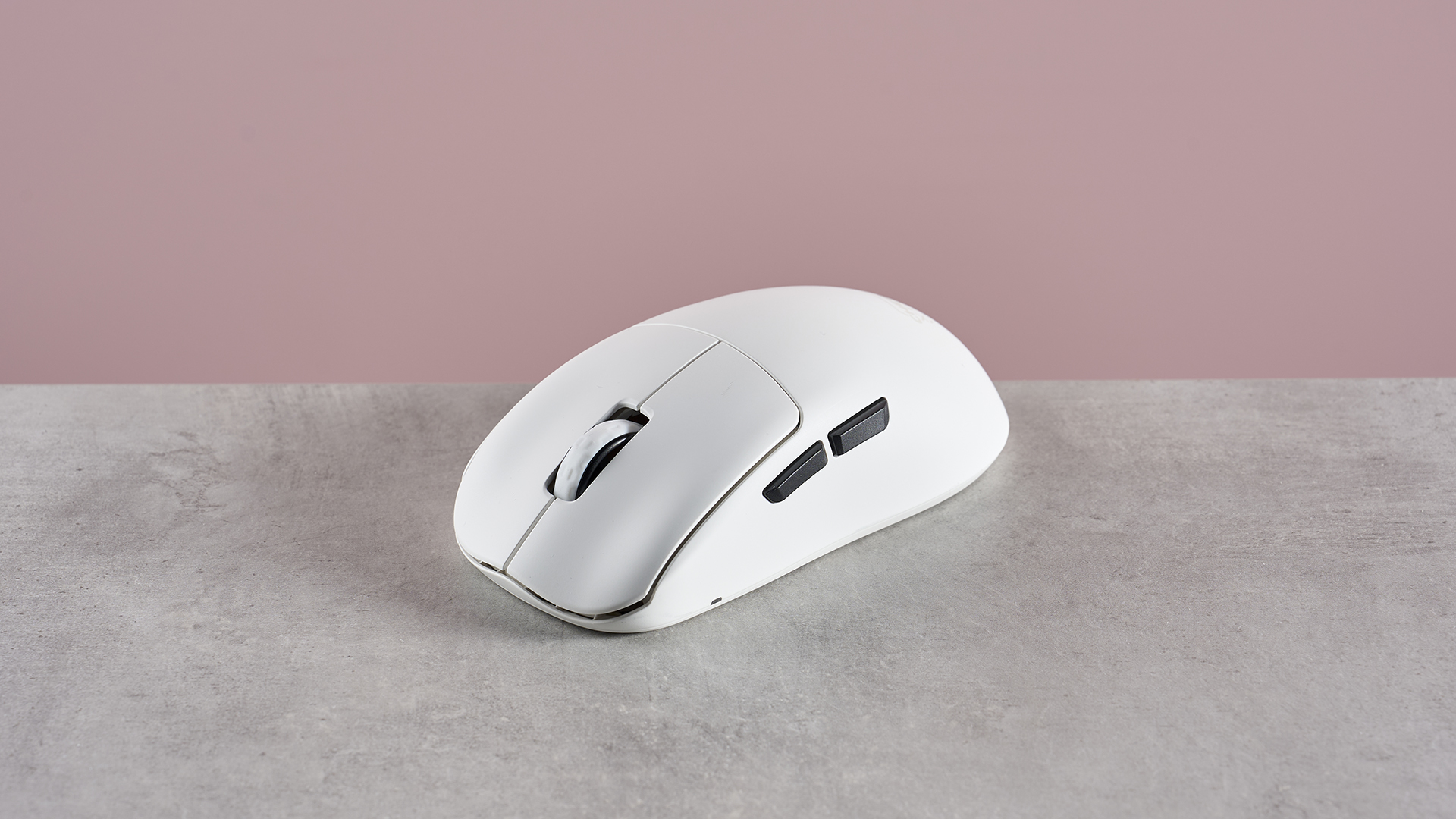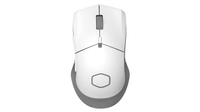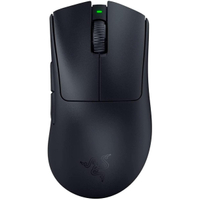TechRadar Verdict
The Cherry XTRFY M68 Pro is a light full-size gaming mouse with a unique design that’s sure to divide opinions. Personally, I found it imparted a greater sense of feel and security though. The gaming performance is undeniable and esports enthusiasts will be pleased with the 8K polling rate. However, the lack of software is disappointing on a mouse at this price, and the solution for adjusting the numerous settings is far from ideal.
Pros
- +
Excellent gaming performance
- +
Ergonomic design
- +
Light for a full-size mouse
Cons
- -
Divisive shape and USB port location
- -
Impractical settings adjustments
- -
No software
Why you can trust TechRadar
Cherry XTRFY M68 Pro: two-minute review
At first glance, the Cherry XTRFY M68 Pro is rather restrained in its appearance as gaming mice go. Its straightfoward design is rather inconspicuous, and the white model I've reviewed here is only offset by black side buttons and accents on the scroll wheel. The logo is inconspicuous and there’s no RGB lighting either. So far, so conventional.
However, the design of the Cherry XTRFY M68 Pro's front end is less so. The mouse buttons are raised steeply at the back, and curve down sharply before cutting short, which means the contact point is biased towards your fingertips, more so than I’ve experienced with many other gaming mice.
The M68 Pro weighs just 55g, and there aren’t too many full-size wireless gaming mice lighter than this. It undercuts the Razer DeathAdder V3 Pro, our pick as the best wireless gaming mouse, by eight grams. The Turtle Beach Burst 2 Air is one of the rare few that’s even leaner, tipping the scales at just 47g.
The two primary buttons on the M68 Pro feel solid yet easy to fully depress, and the same is true of the side buttons. The scroll wheel is notched well, making for smooth yet controlled spins, and the rubber layer offers plenty of grip, helping to make clicks feel secure. Overall, the M68 Pro seems to be a well-constructed gaming mouse.
The skates are quite thin, so you do feel hard desktop surfaces a little when maneuvering. Despite this, the M68 Pro doesn’t scratch or bottom out, as other gaming mice with insufficient padding do. This is impressive, especially considering there are only two skates on the top and bottom (although the included spare set features a piece for the sensor too). This is still a mouse I would recommend only using with a mouse pad, though, in order to get the best out of it.
The USB port is also located on the right rear side of the M68 Pro, a placement that will no doubt prove contentious, bucking the typical front-end trend (perhaps the snub-nose design leaves no internal room for this placement).
However, it does have the advantage of eliminating drag, although the included braided cable for wired play is light enough to make this no concern regardless. The port is also deeply recessed, so there’s no fear of accidental disconnection. The one major proviso, though, is that you’re right-handed and have your desktop on the right; if it’s on your left, then the cable is liable to get in the way.
Pressing the bottom button, which toggles between various settings and modes, can be awkward, as it sits flush with the underside surface. This is especially the case when pressing in combination with the two side buttons to toggle between the sensor modes, and I struggled to activate it consistently.
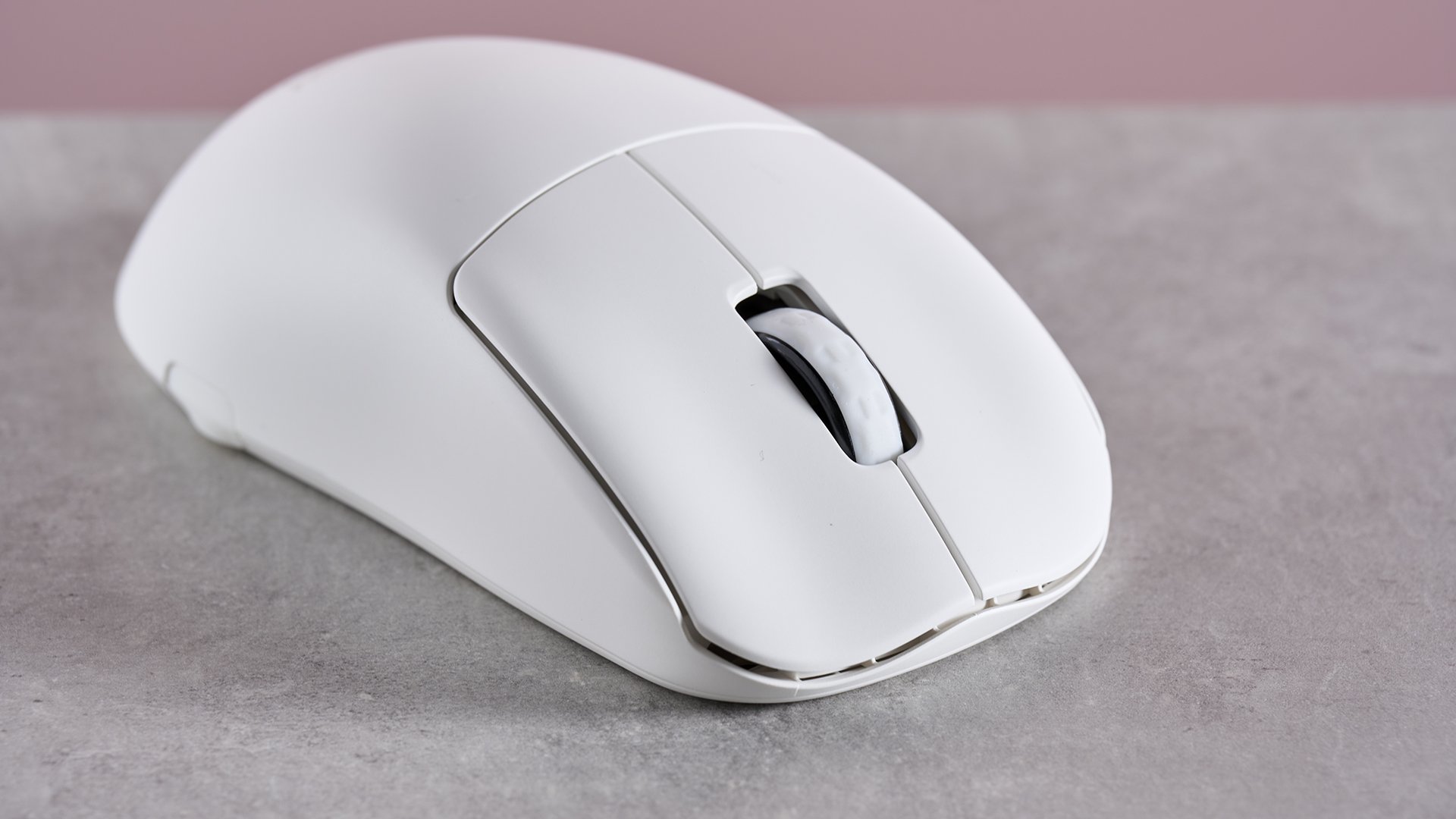
In fact, altering most of the settings on the M68 Pro is very awkward, since many require various odd button combinations. Worst of all, the buttons still register normal input when you're trying to activate the combinations, which means you have to be very careful about what window you’re on and where the cursor is.
These combinations are a necessary compromise given the lack of buttons and software, but keeping them active when holding them down is a serious misstep. Another gripe I have is that selected parameters are only indicated via different colors displayed on the small side LED, so you’ll likely have to keep referring back to the manual til they’re ingrained in your memory.
Once you get your head around these button combinations, though, there’s a wide selection of adjustments present on the M68 Pro. Despite having no software, there are eight onboard CPI settings to choose from, offering enough scope to dial in levels precise enough for most gamers. There are also four debounce time increments, ranging from 2ms to 12ms, which again should be more than enough to meet individual preferences.
There are only two lift-off distances (1mm and 2mm) to choose from, although this isn’t out of the ordinary, and while there are six polling rates to choose from (or four when wired, topping out at 1K), I can’t see many people wanting more than three for low (125Hz), mid (1K), and high (8K) values. There’s also an option to toggle motion sync on and off.
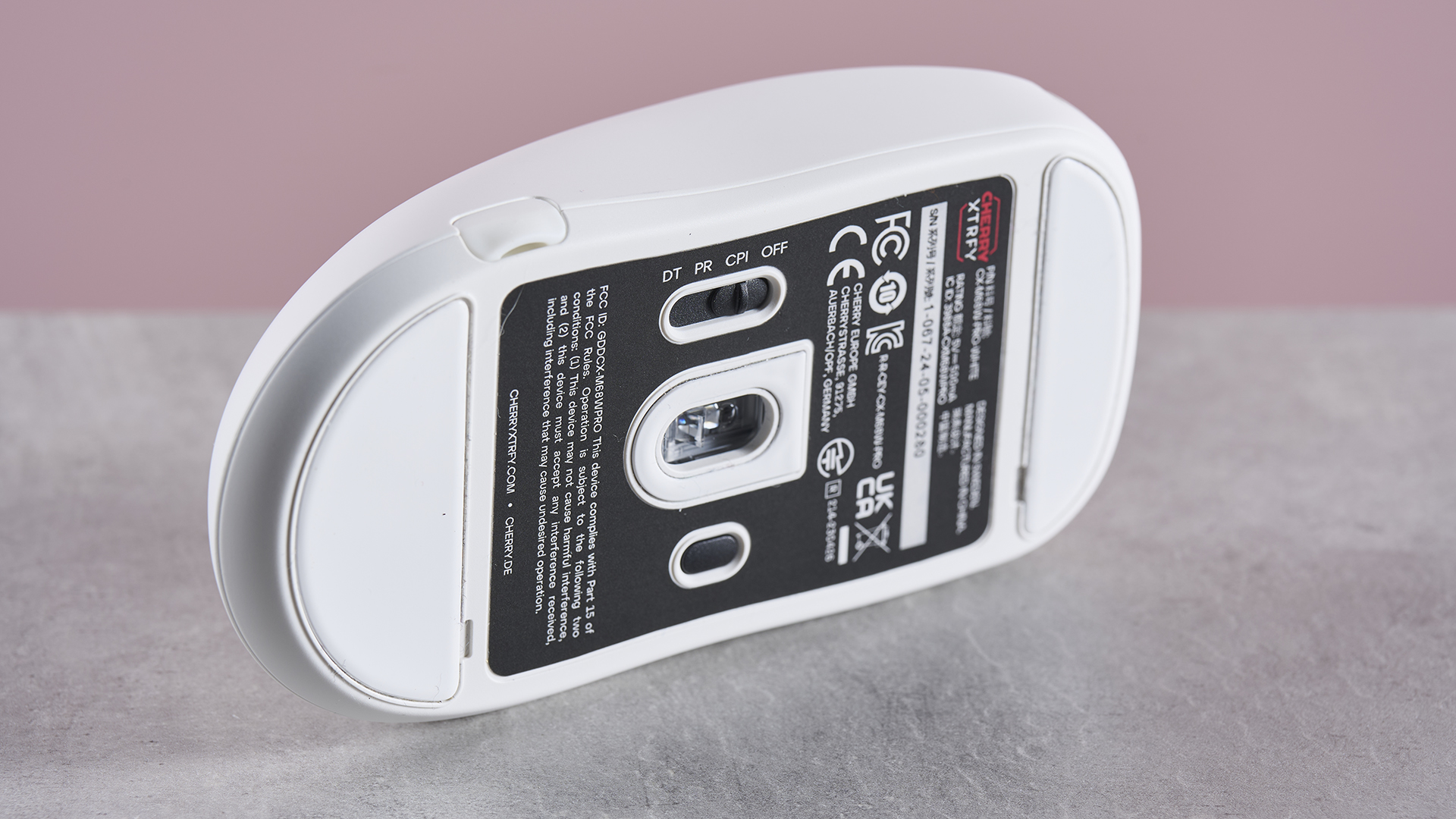
Once you start gaming, though, the M68 Pro starts to shine. That aforementioned fingertip emphasis encouraged by sloping mouse buttons makes for a more tactile experience. It meant I could get a better grip when lifting off before swipes, and somehow gave me a greater sense of connection to the on-screen action, especially when aiming. The different sensor modes are also effective, with Pro Gaming mode being remarkably snappy and precise, perfect for FPS titles.
Cherry claims the M68 Pro’s battery can last up to 90 hours on a single charge. Although I wasn’t able to get an exact measurement, I can say that after several days of testing, the LED was still green, indicating a percentage of between 75-100%.
To show the battery level, you have to hold down both side buttons and the left mouse button for three seconds, another inconvenient method if you’re still connected to your machine, since again the buttons will still operate. There are four colors representing the 25% increments, and since there’s no software, there’s no way to get a more accurate assessment than this.
All things considered, the M68 Pro is a high-caliber wireless gaming mouse with a few design quirks that may please some but deter others. It’s not what you’d call cheap, but it does beat perhaps its closest rival, the Razer DeathAdder V3 Pro, when it comes to pricing.
The DeathAdder can be tweaked with Razer’s in-depth Synapse software, though, which is more convenient. And if you can live without an 8K polling rate and an inbuilt battery, the Cooler Master MM311 is a viable alternative with exceptional value, given it’s still wireless.
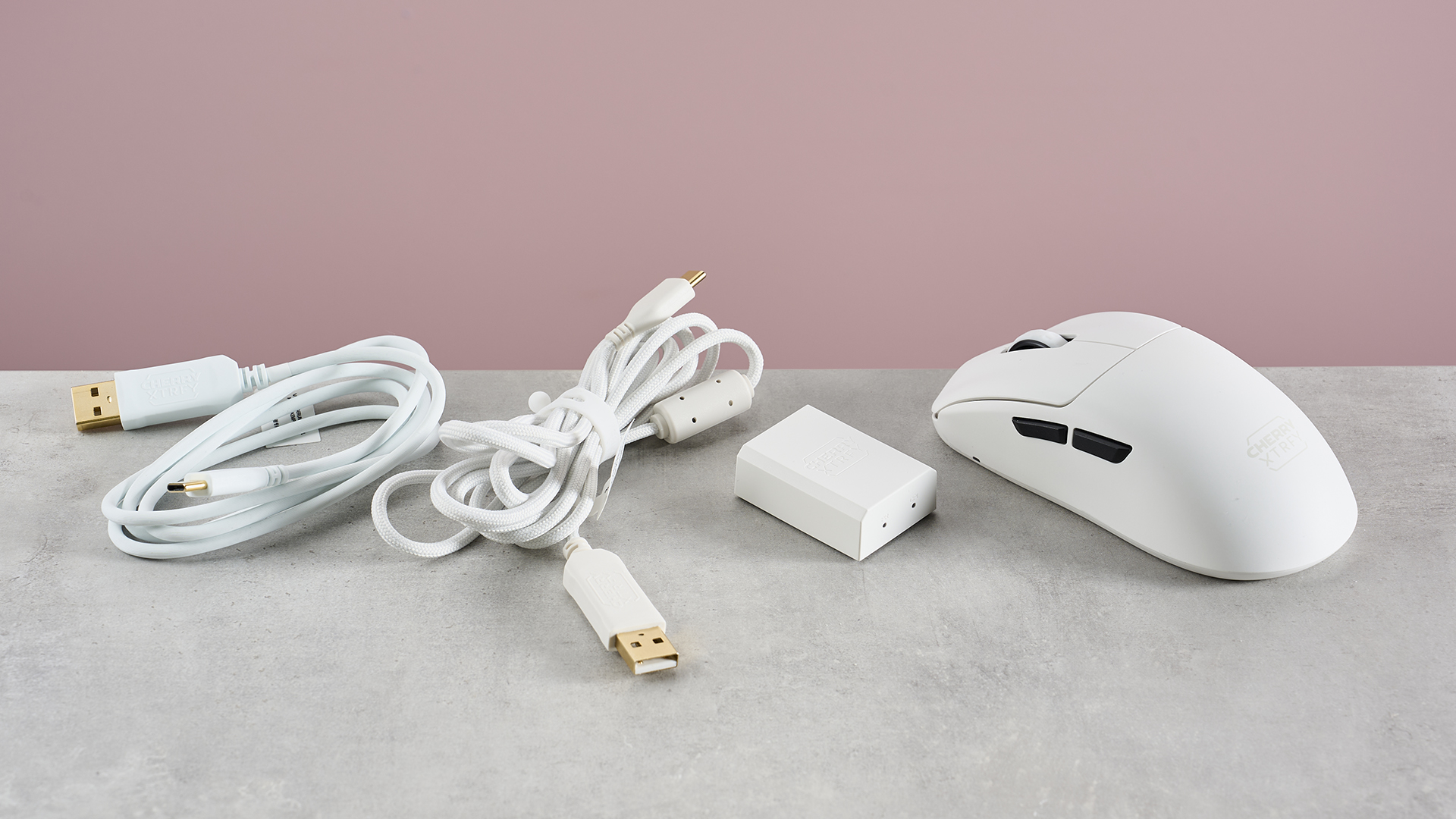
Cherry XTRFY M68 Pro: price & availability
- $129 / £139 / AU$214
- Black, white, and Team Vitality editions
- Mid-range value
The M68 Pro costs $129 / £139 / AU$214. There’s one white colorway and two black variants: one with gray accents and another with yellow that also sports the logo of esports organization Team Vitality in place of Cherry XTRFY’s.
It’s cheaper than our pick for the best wireless gaming mouse, the Razer DeathAdder V3 Pro, yet still competes with it spec-for-spec, as both have an 8K polling rate and the M68 Pro is even lighter.
However, there are more budget-friendly wireless options around, such as the Cooler Master MM311, which is the best gaming mouse for those on a budget – it’s massively cheaper than the M68 Pro and many other wireless gaming mice for that matter. However, its polling rate tops out at 1K, and it requires a single AA battery. Still, if you’re not after eSport-level performance, this may be a better alternative.
Cherry XTRFY M68 Pro: specs
| Interface | Wireless (2.4GHz) |
| Ergonomics | Right-handed symmetrical |
| Buttons | 6 |
| DPI | Up to 26,000 |
| Switches | Not specified |
| Weight | 1.94oz (55g) |
Should I buy the Cherry XTRFY M68 Pro?
| Attributes | Notes | Rating |
|---|---|---|
| Value | The M68 Pro is somewhere in the middle of the market for a gaming mouse of this spec, although it does slightly undercut one of its chief rivals, the Razer DeathAdder V3 Pro. | 3 / 5 |
| Design | The stubby front probably won’t please everyone, and neither will the port placement, but I personally clicked with both. The build quality seems high and its looks aren’t likely to offend. The method for adjusting settings isn’t the easiest, though. | 4 / 5 |
| Performance | There are enough settings to suit virtually any play style, and it’s super responsive and snappy in Pro Gaming mode. It’s also a joy to click and maneuver thanks to that steep, short front as well. | 4 / 5 |
| Overall | The unique shape of the M68 Pro is a personal highlight for me, as is the stellar gaming performance. It looks smart and is built well too. Its quirks will irk some more than others, but overall, it matches the performance of other top wireless gaming mice. | 4 / 5 |
Buy it if...
You want elite performance
The 8K polling rate will delight many pro-level players, and the overall performance when gaming is terrific.
You want something you can really grip
The short, raking front end makes the M68 Pro a joy to hold in my opinion - although it may not be to every gamer’s taste.
Don't buy it if...
You want multiple connectivity modes
There’s only one way to connect wirelessly, and using the mouse in wired mode may not suit everyone’s setup, considering the USB-C port is on the right.
You’re on a budget
Although it’s slightly cheaper than some big-name rivals, including Razer, there are alternatives offering better value if you don’t need that ultra-high polling rate.
Cherry XTRFY M68 Pro: also consider
| Header Cell - Column 0 | Turtle Beach Burst 2 Air | Razer DeathAdder V3 Pro | Cooler Master MM311 |
|---|---|---|---|
| Price | $129 / £139 / AU$214 | $159 / £159 / AU$299 | $39 (about £31 / AU$59) |
| Interface | Wireless (2.4GHz) | Wireless (Razer HyperSpeed) | 2.4GHz wireless |
| Ergonomics | Right-handed symmetrical | Right-handed asymmetrical | Right-handed symmetrical |
| Switches | 6 | 6 | 6 |
| DPI | 26,000 | 26,000 | 10,000 |
| Switches | Not specified | Razer optical switches gen-3 | Not specified (mechanical) |
| Weight | 1.94oz (55g) | 2.22oz (63g) | 2.71oz (77g) |
Cooler Master MM311
If you can live without that 8K polling rate – which more casual gamers can – then the MM311 is an excellent budget choice. In our review, we found it was still capable enough thanks to its great performance. It doesn’t have an inbuilt battery, requiring an AA battery to power, but that’s a minor inconvenience considering its price tag. Read our full Cooler Master MM311 review.
Razer DeathAdder V3 Pro
Another state-of-the-art gaming mouse with an 8K polling rate, the DeathAdder V3 Pro is only marginally more expensive than the M68 Pro, yet it has the advantage of integrating with Razer’s excellent Synapse software. It’s hard to find fault with this gaming mouse, which is why it currently claims the top spot as the best wireless gaming mouse overall in our view. Read our Razer DeathAdder V3 Pro review.
How I tested the Cherry XTRFY M68 Pro
- Tested for several days
- Played various games
- 10+ years PC gaming experience
I tested the M68 Pro for several days. During this time, I used it for gaming, working, and casual tasking.
I played titles such as Counter-Strike 2, Metal Gear Solid 3: Snake Eater - Master Collection Version, and Fear the Spotlight, in order to cover a variety of genres.
I have been PC gaming for over 10 years, and have experienced many mice during that time. I have also reviewed numerous gaming mice, all with various connectivity options, sizes, polling rates, and features.
First reviewed: October 2024
Read more about how we test

Lewis Maddison is a Reviews Writer for TechRadar. He previously worked as a Staff Writer for our business section, TechRadar Pro, where he gained experience with productivity-enhancing hardware, ranging from keyboards to standing desks. His area of expertise lies in computer peripherals and audio hardware, having spent over a decade exploring the murky depths of both PC building and music production. He also revels in picking up on the finest details and niggles that ultimately make a big difference to the user experience.
You must confirm your public display name before commenting
Please logout and then login again, you will then be prompted to enter your display name.
